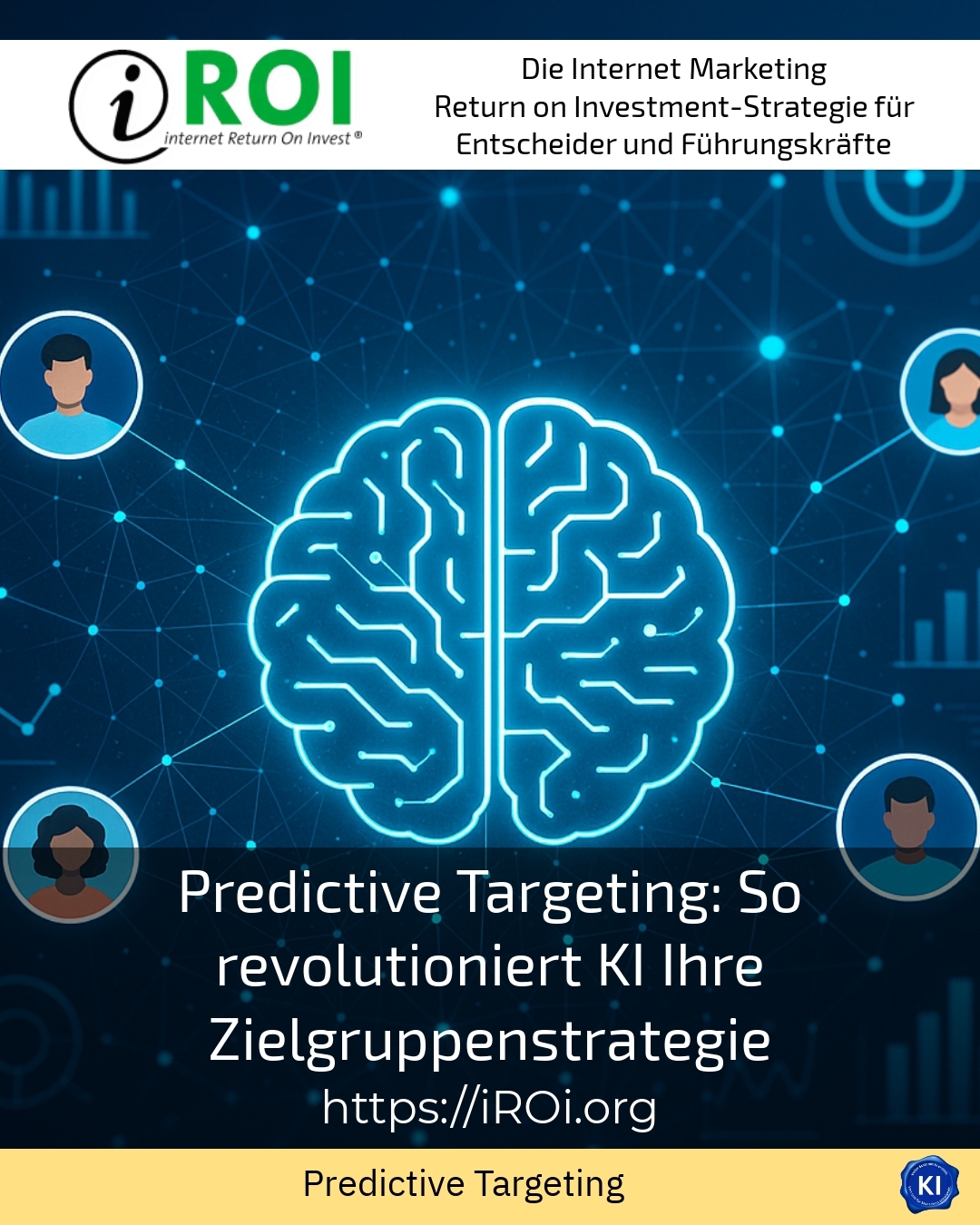The modern marketing landscape is increasingly characterised by technologies such as predictive targeting. This method enables companies to precisely analyse and target their target groups by using historical data and algorithms to predict future actions. Predictive targeting is a further development of traditional targeting and integrates AI technologies to increase the effectiveness of marketing strategies. By combining browsing behaviour, purchase histories and other data sources, companies can develop customised content and advertising measures that are tailored to the specific needs of their target groups.
How does predictive targeting work?
Predictive targeting is based on the analysis of large amounts of data in order to identify patterns and trends in user behaviour. This data comes from various sources such as surfing behaviour, social media and customer management systems. Machine learning algorithms are used to make predictions about the future behaviour of users, which makes it possible to develop targeted advertising measures and increase the relevance of content for users[1][3].
Examples from practice
One example of the use of predictive targeting is the personalisation of product recommendations in online shops. Here, customers' purchase histories and surfing behaviour are analysed in order to generate relevant product suggestions that correspond to their interests[5].
Another example is the targeted addressing of target groups in social media. By analysing the interactions and behaviour of users, companies can control targeted advertising measures that are tailored to the specific needs and preferences of the target group[4].
Predictive targeting: revolutionising the target group strategy
Predictive targeting is revolutionising target group strategy by enabling companies to precisely segment and target their target groups. By integrating AI technologies, large amounts of data can be processed quickly, leading to more efficient use of resources and higher conversion rates[2][8].
Advantages of predictive targeting
A key advantage of predictive targeting is the ability to create personalised content that is tailored to the specific needs of the target group. This leads to greater relevance of the content and improved customer loyalty[10].
Another advantage is the dynamic adaptation of marketing strategies to changing market conditions. By continuously analysing data, companies can react quickly to changes in customer behaviour and adapt their campaigns accordingly[2].
BEST PRACTICE with one customer (name hidden due to NDA contract)An online shop used predictive targeting to increase the purchase probability of its customers. By analysing surfing behaviour and purchase histories, personalised product recommendations were generated, which led to a significant increase in sales.
My analysis
To summarise, predictive targeting plays an important role in the modern marketing landscape. By integrating AI technologies, companies can precisely analyse and target their target groups, resulting in more effective marketing strategies. iROI-Coaching supports companies in implementing predictive targeting to optimise their marketing measures and strengthen customer loyalty.
Further links from the text above:
– Predictive behavioural targeting - nerdly
– AI in target group analysis - invictus-lead-generation
– Predictive Behavioural Targeting (PBT) Definition - lingner
For more information and if you have any questions, please contact Contact us or read more blog posts on the topic internet Return on Investment - Marketing here.















